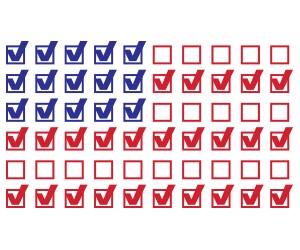Our country’s schools—whether they be charters, recovery districts, traditional public schools, or those that take vouchers—are becoming increasingly difficult to categorize. Recent changes in school governance, funding, and practice have arisen in response to both some legitimate and some wrongly perceived failures of public schools. Some states, seeking alternatives to low-performing public schools, have chosen to use vouchers to redirect children living in those districts into private or religious schools funded by public taxpayer dollars, believing those schools can raise student performance. These changes could be accelerated by President Donald Trump’s plans to expand school choice via more voucher programs, an approach celebrated by U.S. Secretary of Education Betsy DeVos.

Too often, some so-called “public” schools are only formally public in the sense that they are government-run, taxpayer-funded, and subject to various accountability measures. Many struggle to fulfill a key expectation of what public schools were meant to do: provide equal opportunities for all children. Many citizens have been content to accept the formal classification of “public” without upholding criteria for the way that public schools ought to function. This is a problem.
Proponents of newer and alternative types of public schools, such as recovery districts and for-profit charter schools, increasingly cast public schools in formalist terms—categorizing them by their form, rather than their function—while trimming those terms to better align with their own structure.
According to the definition of one longtime school choice advocate, senior fellow and president emeritus of the Thomas B. Fordham Institute Chester E. Finn Jr., a public school is “any school that is open to the public, paid for by the public, and accountable to the public. It need not be run by the government.” Such labeling allows private and for-profit service providers to run public schools as long as they meet minimum formal criteria of being publicly funded and held to basic accountability standards.
There are five responsibilities schools should have in order to truly be defined as 'public.'"
But this label fails to encapsulate how corporate-managed charter schools operate as autonomous entities. About half the students attending charter schools go to one that is privately corporate-managed, according to estimates by the research nonprofit National Education Policy Center at the University of Colorado. For example, they may be accountable to communities only through standardized-testing performance, but not through an elected school board. They often draw on additional funding from private investors, who in turn hold the management organizations to their own expectations of profit and success at the expense of students.
In fact, it’s in the interests of those advocating for private and alternative schools to redefine the nature of public schools in ways that will enable more of the annual $600 billion spent on public schools at the local, state, and federal levels to flow their way. Vouchers, according to a July tweet from DeVos, are “an investment in individual students.” This thinking argues that providing direct funds to students’ families is equitable. But it downplays the limited nature of voucher schools, which can hold meetings behind closed doors, impose admissions criteria to block out certain students, and submit minimal accountability data. What’s more, emphasizing financial investment in an individual child is directly the opposite of long-standing views on what public schools should be doing—serving our democracy through the common good.
In this changing terrain, there are five responsibilities schools should have in order to truly be defined as “public":
• Public schools should be open to the public, meaning all children are not only permitted but are also welcomed and equitably supported, even if their education may be more costly than average, such as that of students with disabilities or English-language learners.
• They should serve the public, meaning they meet societal needs like preparing active citizens to maintain the government and economy or to serve in the military or on juries, while also preparing graduates to critique and revise those needs.
• They should be responsive to the public, enabling comunity members to vote out school officials or change school policies through meaningful and viable avenues like elections, referendums, and open school meetings.
• They should be creators of the public, meaning that they cultivate citizens who know how to exchange ideas and respond to the ideas of others, while tolerating and working across differences.
• They should sustain democracy by developing skills and dispositions within children for participating and enacting freedom-oriented decisionmaking.
As places where students come together to deliberate, learn, celebrate, and solve problems, public schools can unite large and diverse groups around common culture, while still maintaining respect for individuality and distinction. As the late political theorist Benjamin Barber believed, public schools are places where children learn to be a public.
Sustaining democracy requires the skills and knowledge best offered in schools that are formally and functionally public. This is not to say that many don’t fall short of democratic goals. Yet the nature of public schools outlined in those five criteria provides the potential for meeting those ends in ways not always possible in private or for-profit charter schools, whose missions, student bodies, ideologies, and closed-door-governing practices are often too constrained to be aligned with democratic aims.
The debate will no doubt continue about which types of schools deserve public tax dollars. If we continue to focus on categorizing schools as public merely on the basis of their increasingly narrowed elements of formal operation, we will gloss over their function as places of citizenship development. We must instead concentrate on what public schools can and should provide for all students—and be careful about where we toss the label. The health of our education system and democracy depend on it.




